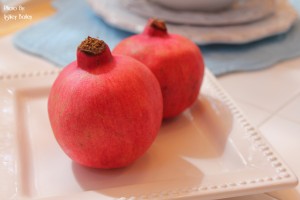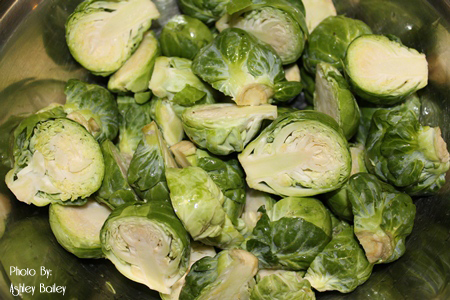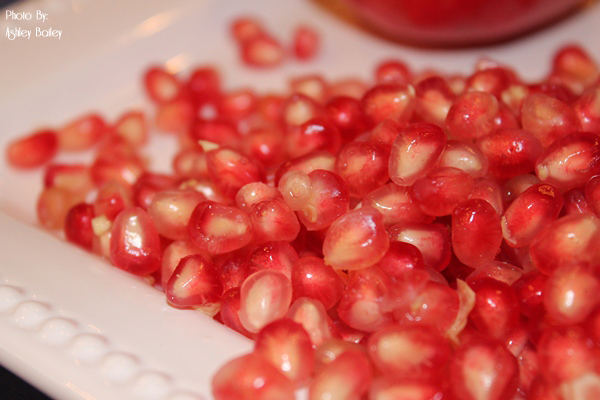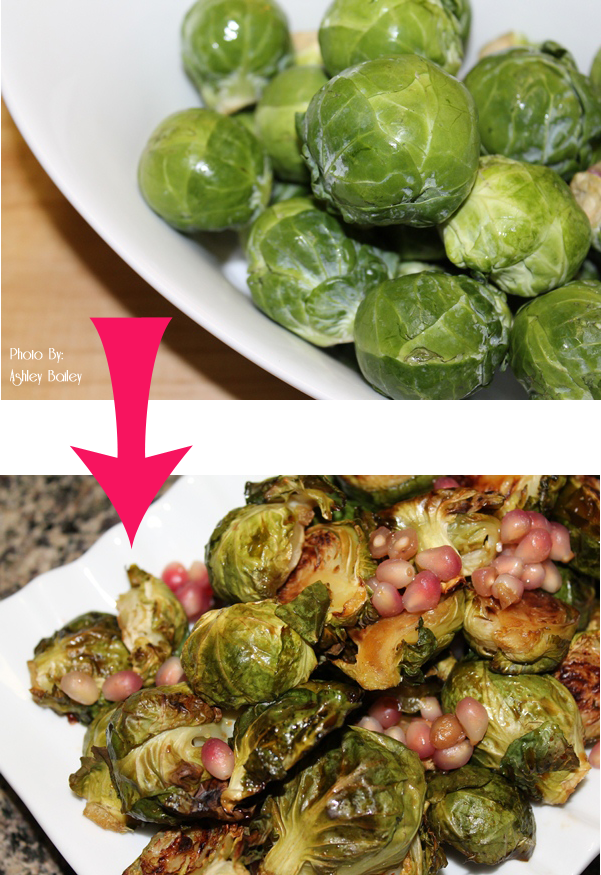Pomegranates are popping up everywhere and are in everything from ice cream and rice cakes to body wash and even candles! So what’s the big deal about pomegranates?
Pomegranates have been around since Greek mythology and are considered a super fruit because they’re packed with antioxidants, vitamin C, fiber, polyphenols and much more. The high antioxidant content of the fruit may help decrease the risk of heart disease by reducing inflammation and the buildup of plaque and cholesterol. It may also reduce the risk of developing certain cancers.
The word pomegranate means "seeded apple" which is a fitting translation considering each fruit contains hundreds of edible seeds. The seeds, called arils, are the only edible portion of a pomegranate and are trapped inside the fruit in sacs by white, bitter membranes.
Selection and Storage
Pomegranates are generally available in stores from September to January. When choosing the perfect pomegranate, pick ones that are:
- Heavy- this means the fruit is ripe and full of juicy goodness.
- Dark or bright red with smooth, tight skin.
- Free of bruises, cuts or cracks.

Whole pomegranates can be stored at room temperature, away from sunlight, for several days. If refrigerated in a plastic bag, they can last 2-3 months.
Pomegranate seeds can be stored up to 3 days in an airtight container in the refrigerator. You can also freeze seeds by placing them in a single layer on a tray until frozen and then transferring to an airtight container. You can store them in the freezer for up to 3 months.
Seeding a Pomegranate
One pomegranate yields approximately ½- ¾ cup of seeds. The seeds are sweet and bursting with flavor and can easily be added to salads, salsas and marinades or used as a festive garnish to add a pop of color to any dish. Pomegranate seeds are a delicious addition to any dish but do you avoid pomegranates because you’re not sure what to do with them or because you worry that seeding them may be too difficult or messy?
Note: Pomegranates are similar to grapefruits in that they may interfere with certain medications. Check with your health care provider before consuming pomegranates if you are taking any medications.
Pomegranate Roasted Brussels Sprouts
Recipe Adapted from: BlueKaleRoad, Food 52
Serves 4
Now that you know how to easily seed a pomegranate, give this recipe a try for a colorful, festive dish that turns plain boring Brussels sprouts into something your family will love and enjoy!
Ingredients
1 lb (approximately 4 cups) Brussels sprouts
1 Tbsp extra virgin olive oil
1 Tbsp honey or maple syrup
½ Tbsp balsamic vinegar
¼ tsp salt, or to taste
Seeds of 1 pomegranate (approximately ¾-1 cup)
Directions
1. Pre-heat oven to 375° F. Line a baking sheet with aluminum foil.
2. Cut Brussels sprouts in half and discard any discolored leaves.

3. Toss Brussels sprouts with olive oil and spread in a single layer, cut side down, onto baking sheet.

4. Roast in oven for 20-30 minutes or until Brussels sprouts become tender and are deep golden brown on cut sides, with some visible crispy edges.
5. In a small bowl, whisk honey or maple syrup, balsamic vinegar and salt until combined.
6. Remove baking sheet from oven and drizzle vinegar mixture over Brussels sprouts. You can use a spatula to lift Brussels sprouts and gently toss to coat. Spread evenly again in a single layer, cut side down.

7. Return Brussels sprouts to oven and roast for another 5-7 minutes.
8. Remove from oven, toss Brussels sprouts with pomegranate seeds, and enjoy!
Click here for a printer-friendly version of this recipe.




